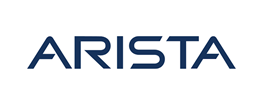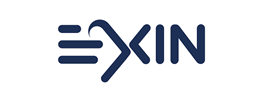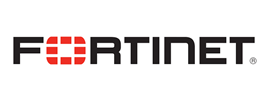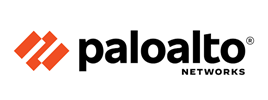- Course overview
- Course details
- Prerequisites
Course overview
About this course
This course provides IT Security Professionals with the knowledge and skills needed to implement security controls, maintain an organization’s security posture, and identify and remediate security vulnerabilities. This course includes security for identity and access, platform protection, data and applications, and security operations.
Audience profile
This course is for Azure Security Engineers who are planning to take the associated certification exam, or who are performing security tasks in their day-to-day job. This course would also be helpful to an engineer that wants to specialize in providing security for Azure-based digital platforms and play an integral role in protecting an organization's data.
At course completion
You will be able to:
- Describe specialized data classifications on Azure
- Identify Azure data protection mechanisms
- Implement Azure data encryption methods
- Secure Internet protocols and how to implement them on Azure
- Describe Azure security services and features
Course details
Module 1: Secure Azure solutions with Azure Active Directory
- Configure Azure AD and Azure AD Domain Services for security
- Create users and groups that enable secure usage of your tenant
- Use MFA to protect user's identities
- Configure passwordless security options
Module 2: Implement Hybrid identity
- Deploy Azure AD Connect
- Pick and configure that best authentication option for your security needs
- Configure password writeback
Module 3: Deploy Azure AD identity protection
- Deploy and configure Identity Protection
- Configure MFA for users, groups, and applications
- Create Conditional Access policies to ensure your security
- Create and follow an access review process
Module 4: Configure Azure AD privileged identity management
- Describe Zero Trust and how it impacts security
- Configure and deploy roles using Privileged Identity Management (PIM)
- Evaluate the usefulness of each PIM setting as it relates to your security goals
Module 5: Design an enterprise governance strategy
- Explain the shared responsibility model and how it impacts your security configuration
- Create Azure policies to protect your solutions
- Configure and deploy access to services using RBAC
Module 6: Implement perimeter security
- Define defense in depth
- Protect your environment from denial-of-service attacks
- Secure your solutions using firewalls and VPNs
- Explore your end-to-end perimeter security configuration based on your security posture
Module 7: Configure network security
- Deploy and configure network security groups to protect your Azure solutions
- Configure and lockdown service endpoints and private links
- Secure your applications with Application Gateway, Web App Firewall, and Front Door
- Configure ExpressRoute to help protect your network traffic
Module 8: Configure and manage host security
- Configure and deploy Endpoint Protection
- Deploy a privileged access strategy for devices and privileged workstations
- Secure your virtual machines and access to them
- Deploy Windows Defender
- Practice layered security by reviewing and implementing Security Center and Security Benchmarks
Module 9: Enable Containers security
- Define the available security tools for containers in Azure
- Configure security settings for containers and Kubernetes services
- Lock down network, storage, and identity resources connected to your containers
- Deploy RBAC to control access to containers
Module 10: Deploy and secure Azure Key Vault
- Define what a key vault is and how it protects certificates and secrets
- Deploy and configure Azure Key Vault
- Secure access and administration of your key vault
- Store keys and secrets in your key vault
- Explore key security considers like key rotation and backup / recovery
Module 11: Configure application security features
- Register an application in Azure using app registration
- Select and configure which Azure AD users can access each application
- Configure and deploy web app certificates
Module 12: Implement storage security
- Define data sovereignty and how that is achieved in Azure
- Configure Azure Storage access in a secure and managed way
- Encrypt your data while it is at rest and in transit
- Apply rules for data retention
Module 13: Configure and manage SQL database security
- Configure which users and applications have access to your SQL databases
- Block access to your servers using firewalls
- Discover, classify, and audit the use of your data
- Encrypt and protect your data while is it stored in the database.
Module 14: Configure and manage Azure Monitor
- Configure and monitor Azure Monitor
- Define metrics and logs you want to track for your Azure applications
- Connect data sources to and configure Log Analytics
- Create and monitor alerts associated with your solutions security
Module 15: Enable and manage Microsoft Defender for Cloud
- Define the most common types of cyber-attacks
- Configure Microsoft Defender for cloud based on your security posture
- Review Secure Score and raise it
- Lock down your solutions using Microsoft Defender for Cloud's workload protection
- Enable Just-in-Time access and other security features
Module 16: Configure and monitor Microsoft Sentinel
- Explain what Microsoft Sentinel is and how it is used
- Deploy Microsoft Sentinel
- Connect data to Microsoft Sentinel, like Azure Logs, Azure AD, and others
- Track incidents using workbooks, playbooks, and hunting techniques
Prerequisites
Successful learners will have prior knowledge and understanding of:
- Security best practices and industry security requirements such as defense in depth, least privileged access, role-based access control, multi-factor authentication, shared responsibility, and zero trust model.
- Be familiar with security protocols such as Virtual Private Networks (VPN), Internet Security Protocol (IPSec), Secure Socket Layer (SSL), disk and data encryption methods.
- Have some experience deploying Azure workloads. This course does not cover the basics of Azure administration, instead the course content builds on that knowledge by adding security specific information.
- Have experience with Windows and Linux operating systems and scripting languages.
Enquiry
Course : AZ-500: Microsoft Azure Security Technologies
Enquiry
request for : AZ-500: Microsoft Azure Security Technologies





















